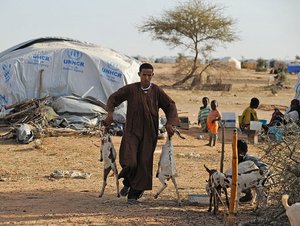Humanitarian-Development-Peace Nexus

Recurring crises and protracted conflicts world-wide have become the new normal and are leading to fragility, insecurity and migration. Since refugees flee from their insecure region to a less fragile one, the demands in the new region are twofold – the refugees need basic services such as shelter, medical service, food and sanitation, while the host countries and communities request support for a sustainable use of natural resources in what is now a region of increased population density. On-going crises and conflicts not only demand humanitarian assistance but also call for development co-operation and peace-building. If a crisis is protracted, as is the case in Bangladesh with the Rohingya refugees in Cox’s Bazar camp, then it becomes important to provide solutions bridging the gap between humanitarian assistance and development co-operation, while supporting peace-building. This interaction is called the Humanitarian-Development-Peace Nexus, or simply the triple nexus. But how do the different international institutions and organisations benefit from synergies when working together? Who develops and oversees the diverse approaches of the various actors to complementing each other’s work? To align these actions at global level, the first United Nations World Humanitarian Summit was held in Istanbul, Turkey, in 2016. Since then, different methods have been set up or gained more significance, such as the UN’s New Way of Working, the Whole-of-Government approach and Linking Relief, Rehabilitation and Development (LRRD).
- Joining what belongs together?(2019)
- A path to peace and stability(2019)
- Putting the nexus into practice – the EU’s humanitarian perspective(2019)
- Closing the gap – The German perspective on the Humanitarian-Development-Peace Nexus(2019)
- Doing nexus differently – lessons from the Middle East and North Africa(2019)
- Promoting children's rights and gender equity(2019)
- Building resilience to food crises – an integrated approach from Mali(2019)
- Returning to agriculture – the case of Haiti(2019)
- Dignifying sanitation services for the Rohingya refugees in Cox’s Bazar camps(2019)
- The strategic dimension of the humanitarian-development gap – conceptual claims and empirical evidence(2019)



